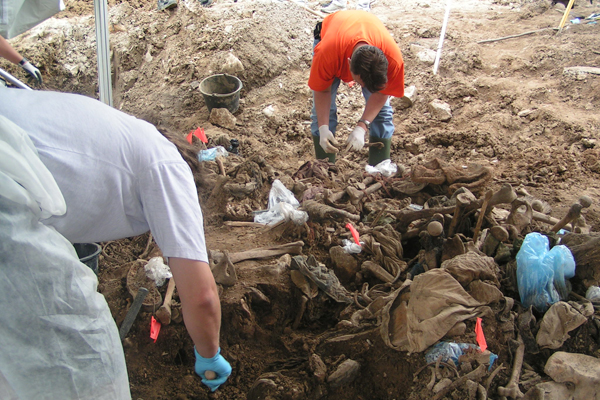Scientists Use Radar to Locate Clandestine Graves

It's hard to convict someone of murder if their victim's body is never found. And it's hard to find a body once it's underground.
This is the problem troubling researchers from the National University of Colombia in Bogota. The group of forensic geophysicists is developing techniques that may help officials locate clandestine graves, including mass graves where the victims of war crimes are often buried.
The researchers plan to simulate clandestine mass graves by burying pig carcasses in eight different soils and climates throughout Colombia. They will then study the graves using technological methods like ground penetrating radar, electrical resistivity, conductivity and magnetometry.
"Nowadays, there are thousands of missing people around the world that could have been tortured and killed and buried in clandestine graves," said Jamie Pringle of the School of Physical Sciences and Geography at Keele University in the United Kingdom.
"This is a huge problem for their families and governments that are responsible for the human rights of everybody. These people need to be found and the related crime cases need to be resolved."
Pringle, who is leading the Colombian study, has already conducted similar studies throughout his career as a forensic geophysicist. His work with simulated clandestine graves in the U.K. taught him that the detection of corpses depends greatly on understanding how the body decomposes in different soils and climates.
By monitoring soil gases and fluids, researchers are able to better understand these processes and apply them to real-life forensic cases.
Sign up for the Live Science daily newsletter now
Get the world’s most fascinating discoveries delivered straight to your inbox.
The Colombian study will survey eight distinct geological locations over the course of 18 months. And the scientists hope that their research will also allow them to gather clues about time of death and burial, which are important details during a murder trial.
International collaborations among forensic geophysicists have already proven helpful in locating the clandestine graves of IRA victims in Northern Ireland as well as the current excavations of mass graves in Spain that date back to that country's Civil War.
This story was provided by TechNewsDaily, a sister site to LiveScience. Email asklizzyp@gmail.com or follow her @techEpalermo. Follow us @TechNewsDaily, on Facebook or on Google+.

Elizabeth is a former Live Science associate editor and current director of audience development at the Chamber of Commerce. She graduated with a bachelor of arts degree from George Washington University. Elizabeth has traveled throughout the Americas, studying political systems and indigenous cultures and teaching English to students of all ages.









